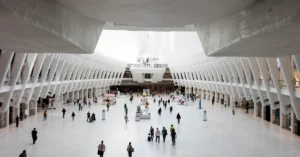Revolutionizing Construction Safety with AI and BIM Technology
The construction industry is among the most hazardous and accident-prone sectors, with high rates of injuries, fatalities, and property damage. According to the Occupational Safety and Health Administration (OSHA), one in five worker deaths in the US occurs in construction, accounting for about 1,000 fatalities each year. Moreover, construction accidents can result in project delays, cost overruns, and reputational damage for contractors and owners. To mitigate these risks and ensure safe and efficient construction projects, companies are increasingly turning to advanced technologies such as artificial intelligence (AI) and building information modeling (BIM).
AI and BIM are two powerful tools that complement each other and can help construction teams to anticipate, prevent, and manage safety hazards throughout the project lifecycle. AI refers to the use of algorithms, machine learning, and other forms of intelligent automation to analyze large datasets and make predictions or decisions based on patterns and rules. BIM, on the other hand, is a digital representation of the physical and functional characteristics of a building or infrastructure asset, which integrates data from various sources and stakeholders into a single model.
By combining AI and BIM, construction professionals can create a “digital twin” of the project, which simulates the construction process and provides real-time feedback on safety risks and performance indicators. Here are some of the ways that AI and BIM are transforming construction safety practices:

- Predictive analytics for risk management
AI can help construction teams to identify and prioritize safety risks based on historical data, project specifications, weather conditions, and other factors. For example, AI algorithms can analyze accident reports, near-miss incidents, and worker behavior patterns to detect potential hazards and recommend preventive actions. By using predictive analytics, construction companies can also optimize their safety protocols and allocate resources more effectively, reducing the likelihood of accidents and injuries.
- Real-time monitoring and alerts
BIM software can integrate sensors, cameras, and other IoT devices to monitor the construction site and track safety metrics such as noise levels, air quality, temperature, and worker location. By combining this data with AI algorithms, construction teams can receive real-time alerts and notifications when safety thresholds are exceeded or anomalies are detected. This allows them to respond quickly and effectively to potential safety incidents and prevent them from escalating.
- Collaborative planning and communication
BIM technology enables construction teams to share and collaborate on safety-related information, such as hazard maps, emergency response plans, and safety checklists. By using BIM-based communication tools, such as 3D visualization, augmented reality, and virtual reality, workers can better understand the safety risks and precautions, and coordinate their actions more effectively. This can help to reduce confusion, misunderstandings, and delays, and improve overall safety performance.
- Training and education
AI and BIM can also be used to enhance the training and education of construction workers and managers on safety topics. For example, AI-powered simulations can simulate hazardous scenarios and provide feedback on the correct safety procedures to follow. BIM-based training modules can also provide interactive and immersive learning experiences, allowing workers to practice and test their safety skills in a risk-free environment.
- Post-construction analysis and improvement
AI and BIM tools can also be used to analyze safety performance data after the completion of the project, to identify areas of improvement and inform future projects. By analyzing the data collected during the construction process, including accident reports, near-miss incidents, and other safety metrics, construction teams can identify patterns, trends, and root causes of safety hazards. This can help to develop better safety protocols, training programs, and risk management strategies for future projects.
Conclusion
Overall, the adoption of AI and BIM technology is transforming construction safety practices by enabling proactive risk management, real-time monitoring, collaborative planning, training, and post-construction analysis. By leveraging the power of AI and BIM, construction teams can reduce safety risks, improve project outcomes, and enhance the overall quality of construction projects.
However, the adoption of these technologies also presents some challenges and barriers, such as the need for specialized skills, data quality and interoperability, and resistance to change. Therefore, it is essential for construction companies to carefully plan and execute their AI and BIM initiatives, involving all stakeholders and addressing their concerns and needs.
In conclusion, AI and BIM technology are revolutionizing construction safety by providing construction teams with powerful tools to anticipate, prevent, and manage safety hazards throughout the project lifecycle. By embracing these technologies, construction companies can improve their safety performance, reduce risks, and enhance their competitiveness in a rapidly evolving industry.
If you’re interested in learning more about architecture firms in Europe, check out this comprehensive list of the top 50 firms compiled by Archgyan. From innovative startups to long-established industry leaders, this list has it all. Take a look and discover some of the most inspiring and influential architecture firms in Europe today.
If you’re interested in architecture and want to learn more about this amazing field, subscribe to our podcast on youtube
For more SketchUp tutorials you can check out https://www.sketchupguru.com/blog/
You can also check more tutorial videos for sketchup on our YouTube Channel,
https://www.youtube.com/c/SketchupGuru
To know about the Top Online 3D Rendering Courses for 2022 click,













